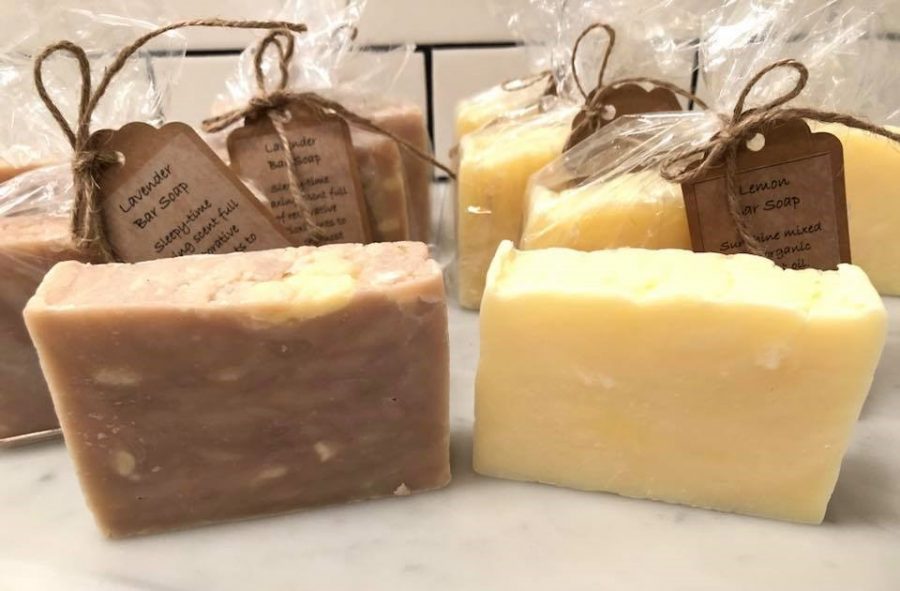Handmade for Mom and Babe: Soap making broken down to the suds
April 5, 2019

It all started during the Christmas season 10 years ago with one batch of soap. It’s always nice to buy the “perfect something” for loved ones, but I especially like handmade items. For my friends with sensitive skin, I decided I would make soap. It would be a practical, kind gesture. The next Christmas, those same friends asked for soap again … and also to buy any extras I had so they could give them to their friends. And so it began. Since then, I have been making soap, large bath bombs, mini bath bombs for kids, beard oil and shower steamers.
If you are thinking about becoming more familiar with what’s in your soap, or want to begin making your own, there are basically three ways to make soap: hot process, cold process and melt-and-pour soap. Melt-and-pour is just as it sounds. You can buy a melt-and-pour glycerin soap base from most craft stores. You simply melt it, add scents, dyes or other additives, and let it harden in a mold. These are the easiest types to make if you are just beginning to make soap or if you are working with children. It is especially cost effective for beginners because you can re-melt the soap and use it again if it doesn’t turn out as you wanted. It’s also fun to find household items to use as molds to shape the soap.
Hot process and cold process soap are more basic, old-fashioned soaps. These processes combine oils and lye to create the soap. In the hot process soap, the lye and oils are cooked and the heat neutralizes the lye. This soap is usually cooked for several hours and left to harden in a mold for several days before cutting. The cold process mixes oils and lye and allows them to sit and “cure” for several weeks. It is through this time period that the lye becomes inactive. It produces a similar bar of soap as the hot process, but takes more time.
Hot and cold process soap allows for the most basic and good-for-your-skin formula as possible with only 5 basic, vegan-friendly ingredients. However, these processes require a larger investment for the soap-maker because it requires tools set aside just for soap-making purposes. It also requires specialized ingredients that often have to be ordered, as they are not readily available.
Although I use all three processes, I prefer the hot process method because I’m not patient! I like being able to create a new product and have it out the door to anxious customers within a week or two, especially at the farmers’ market.
I have always placed a high importance on sourcing materials and ingredients locally and buying from small business owners whenever I can. Selling at the Zanesville Farmers’ Market was a natural extension for my business. I enjoy meeting new people and talking to folks about the products I make. I find it even more rewarding when those same folks come back in a few weeks to tell me the suggested product worked on their sensitive or problematic skin.
Find Handmade for Mom and Babe at the indoor spring farmers’ market this Saturday, April 6, 11 a.m. to 2 p.m., with an assortment of beard oils, bath bombs, shower steamers and soaps. Live music will be provided by local duo, Mister Joe, and Weasel Boy Brewing will have breakfast pizzas and their full craft beverage menu available as soon as the market opens.
You are invited to join us at the Spring Farmers’ Market every Saturday, 11 a.m. to 2 p.m., at Weasel Boy Brewing through April 27.











